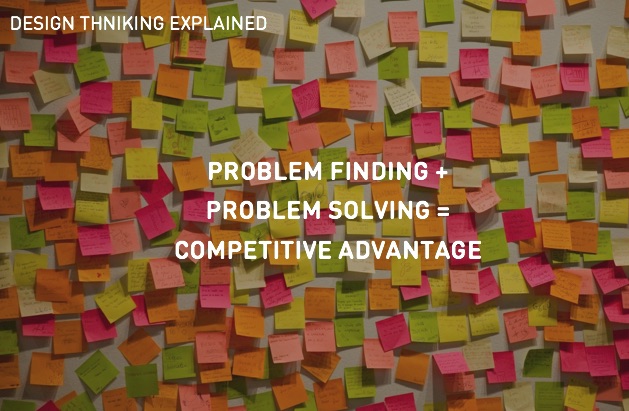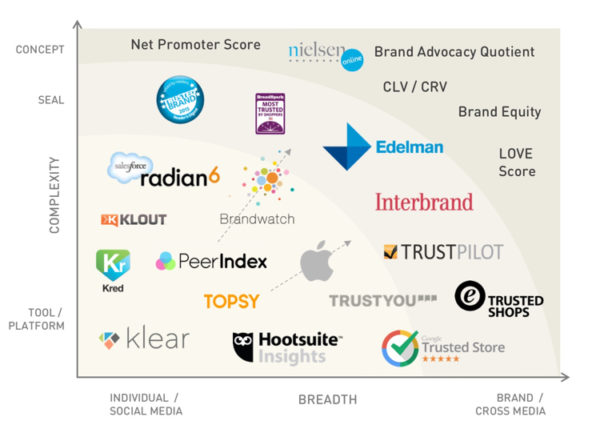T he vast quantities of data a digitally active person produces on a daily basis are impressive. This is why data is regarded as one of the most precious resources that will drive both modern as well as traditional business models. In contrast to this incomparably motivating effect that causes start-up communities around the world to blossom, consumers have become aware of the fact that if they are not paying for a product or service they themselves, or rather their shared information, are the product. The resulting shrouded approaches to data gathering is shortsighted (Morey et al., 2015). Consumer concerns regarding the collection and use of their private data are becoming increasingly pervasive. As a result, they need to be considered in any companies’ marketing and digital strategy. With all the disruptive new digital services and products entering the market every day, it seems that the importance of becoming a trusted business partner has never before been as critical as today. The ability to establish a mutual, honest dialog and a long-term partnership with customers will be central to defining the winners of tomorrow.
5. A Project Approach to Engendering Trust
This following article will further describe how companies can make the topic “digital trust” more tangible by presenting a project approach to forming digital trust.
Like all strategic concepts and frameworks, the approach described hereafter can not be regarded as precise or explicit operation instructions. There is no standard process for identifying and solving trust issues. However, in order to leverage digital trust as a currency and as a key differentiator for future success, companies can build and practice three major business capabilities.
As a management consultant I had the pleasure to conceive and implement numerous digital strategy projects that strongly influenced digital trust. Independent of the exact topic – be it the design of a Big Data strategy or the implementation of a large scale, global social media monitoring solution – the design of a digital strategy can and should be always approached by following three steps. Each step builds up and trains one of the fundamental business capabilities:
First, businesses need to get a good understanding of the issues and potential outcomes at hand. Paying attention to the fact that maturity levels in dealing with customer data differs dramatically from company to company, organizations would be wise to first listen and learn. Second, companies need to build the necessary foundations to successfully enable trust cues. This involves primarily identifying and effectively evaluating the options in form of use cases and testing these cases rapidly in prototypes. Thirdly, the proposed project approach suggests implementing a governance and operating structure that allows managing and optimizing initiatives and ultimately engendering trust. In the last section of this article the three key capabilities will be mapped to single activities that together constitute an exemplary project. This project approach to engendering trust should help to make this abstract topic more tangible and actionable.
1. Understanding trust issues and opportunities
Engendering the belief of competency, benevolence and integrity constitutes a poorly bounded problem. These are problems that are essentially unique. Solutions to these “wicked” problems are not true-or-false, but better or worse. They therefore require a dynamic approach to problem solving. Furthermore, they require an effective approach that ultimately identifies often hidden problems. Last but not least, they require an empathy-based, human centered process that focuses on actual user needs. All of these requirements are met with the Design Thinking methodology by the Stanford Design School.
The capability of “understanding” includes, assessing the current situation, listening to your customers, empathizing with them to understand their problems, learning from all theses insights and ultimately ideating to find initiatives that improve the company’s situation. As an outcome of this step, a team of employees with mixed skills – including business, design and technology skills – will develop a set of ideas that can be further evaluated in a next step and eventually implemented in the last phase of the proposed project approach. The iceberg.digital® model can help to facilitate the ideation process and to identify promising initiatives.
“By outsourcing our thinking to Big Data, our ability to make sense of the world by careful observation begins to wither, just as you miss the feel and texture of a new city by navigating it only with the help of a GPS” (Madsbjerg, Rasmussen, 2014).
This primary capability is essential because observing what real customers do and how they interact with your brand gives you clues about what they think and feel. Empathy is the centerpiece of a human-centered design process. Businesses must be able to find their customers’ topics of concern and therefore to correctly understand their situation. One strategy would be to collect data from traditional and digital sources inside and outside the company and use this data lake as a source for ongoing discovery and analysis. Although advanced analytics can support this step, businesses should rely rather on “thick” than on “big data”. Whereas Big Data can give insights into customer behavior on a massive scale, Thick Data aims to reveal underlying motivations, intentions and emotions.
Dealing with Thick Data includes a complex range of primary and secondary research approaches that require empathy and mindfulness of the observer. Martin Lindstrom, a popular brand management consultant who recently published an interesting collection of use cases for this kind of analysis introduced the term “small data” for the same phenomenon (2016 a). His case studies nicely illustrate the importance of Thick Data. Here an illustrious example: After nearly collapsing in the early 2000’s, Jørgen Vig Knudstorp, CEO of the Danish Lego firm, decided to engage in a major qualitative research project. Instead of analyzing a vast amount of quantitative data, researchers actually observed playing children and their environment. A very small detail unveiled an important fact: Researchers were able to conclude that children were still passionate about the “play experience” and the process of playing (see Lindstrom, 2016 b). Rather than the instant gratification of preassembled toys like action figures, children obviously still value the experience of imagining and creating. This insight led the company back to its traditional building blocks and once again to increasing revenues.
Assessing the current situation requires not only a mindful observation of customers and their interaction with the company, but also a close look inside the organisation. Before engaging on any strategic work, the business needs to know the answer to the question “why?”. Then conceive plans for the “what?” and the “how?”. It is critical to align all trust strategy measures to clearly articulated business objectives. Companies can build a value tree that clearly structures potential value drivers and outlines objectives. Such value trees visually link value drivers with a key financial metric such as the Return On Invested Capital (Koller, 1994). They help to understand and communicate which strategic elements actually drive the financial result of the company. The drivers and objectives identified will be used to evaluate identified initiatives in the second major step – the “enable” capability.
2. Enabling the organisation for trust creation
The capability of “enabling” includes objectively evaluating use case ideas, implementing them into prototypes and following a highly iterative process of testing and adapting these solutions.
One of the most popular reasons why data-driven projects fail, is that the organization’s maturity level and therefore readiness to be guided by data do not fit the plans. It is critical to prepare the organisation and to establish a culture that is open for business insights gained from data. Obviously, this requires buy-in and a strong commitment from top management. One procedure that has shown itself to be effective is to engage management in a workshop session that translates predefined business objectives into guidelines. Whereas business objectives are strongly tied to existing strategic objectives as well as the nature of the business, guidelines represent the organization’s interpretation of these objectives and its intent on how to reach the objectives. Ultimately, solid guidelines form a code of conduct that helps everyone involved to decide how to act and react.
In order to establish a corporate culture that embraces data as a guiding instance, the design and prototype team needs to be truly interdisciplinary. Depending on the nature of the initiatives to be started, include representatives from different business functions in your ideation and scrum teams. Mix people from customer-facing functions, such as marketing, sales and product owners, with functions that indirectly influence customer interaction, such as IT and customer service. This mix of perspectives takes account the fact that trust as a complex psychosocial construct is always influenced by a broad set of factors. The perception of trust is, for example, highly influenced by the way data is collected, the nature of the data collected itself and the way data is ultimately used by an organisation (Nguyen et. al., 2013). Furthermore, the clues that build trust as described in the iceberg model differ in their effectiveness depending on the target group. Whereas a strong brand, for example, is highly effective for “digital natives” (younger, experimental digital customers born after 1980) and “naturalized digitals” (middle-aged, highly educated users), it shows less of an effect for “digital immigrants” (older, mostly passive users). The later audience, however, gives more weight to reciprocity – to a transparent exchange of information for appropriate compensation (Hoffmann et al., 2014). Please visit www.iceberg.digital for more details on how the consumer’s mind works and how trust is built.
As a result of the first capability described in this article, the understanding of trust issues and opportunities, a set of ideas has been created using design thinking techniques. These ideas need to be translated into use cases. Use cases show the aim and the subsequent objectives of a solution and the assigned actors by expressing a list of steps and interactions among them towards a common goal (Matz, Germanakos, 2016). It is recommended to keep these cases as simple as possible; they must be readable and understandable by all project stakeholders, sponsors and the end-users.
Usually, this process so far produces a colorful bouquet of interesting ideas. A major next challenge is to apply an effective and most necessarily objective evaluation logic to prioritize the cases for further implementation in prototypes. Far too often the ideas originating from politically important business stakeholders are preferred to other cases that would yield a better result. All use cases should be equally evaluated along dimensions such as complexity (or feasibility, or cost), expected benefit and strategic fit. In addition, the guidelines discussed previously, as well as the provisions from the governance model, need to be considered to build a shortlist of the most promising use cases.
3. Engendering digital trust
The last but not least recommended capability is one that actually engenders digital trust by making prototypes productive, by effectively managing the portfolio of ideas and by optimizing measures on an ongoing basis.
Trust is earned over time and further shaped on every touch point within the customer life cycle. Companies must actively manage their roadmap of trust initiatives. Feedback from implementation needs to be considered and may require further actions and adaptations. Engendering trust is a highly iterative process. It is therefore essential, to get a good understanding of what works or if certain initiatives may even result in self-defeating effects.
A set of trust metrics would be helpful in controlling initiatives. Unfortunately, there is no satisfying industry standard to measure trust. The landscape of available concepts and metrics to monitor digital trust or related concepts is summarized in the picture below.
As described earlier, trust is influenced by a broad set of factors. Hence, it is very challenging and potentially misleading to establish an automated method to calculate a reliable “trust” score. The argumentation for Thick Data suggests that a qualitative research method leads to more accurate insights than a quantitative approach that draws on complicated algorithms. However, useful scores can be calculated if the breadth of the investigation is reduced. Instead of looking at the perception of the brand, companies can monitor reactions in social media and draw conclusions about tendencies of individuals. A colorful set of automatically calculated scores origin form social media marketing and from influencer marketing in particular. Here, it makes sense to identify and highlight certain individuals that influence the way information is generated and spread within networks.
Social Network Analysis (SNA) provides proven mathematical methods to systematically investigate social networks like the one built by Facebook or even naturally established scalable graphs such as the spreading of a virus. It’s all about the “mapping and measuring of relationships and flows between people, groups, organizations, animals, computers or other information/knowledge processing entities. The nodes in the network are the people and groups while the links show relationships or flows between the nodes. SNA provides both a visual and a mathematical analysis of human relationships” (Krebs, 2006). Popular measures for influencers in social media are the Klout or the Kred score. Although these scores are helpful to identify key individuals to address with trust cues, their support to understand the formation of trust is insufficient. That’s also why brand consultancies such as Brandwatch as well as strong digital brands themselves such as Apple have ingested some start-ups that are experienced in social network analysis. Two years after the acquisition of Topsy in 2013, Apple decided not to offer Topsy’s services anymore, but rather to use Topsy’s technology and talent internally to improve own products and eventually it’s own brand position.
When the focus of investigation shifts away from individuals to brands, trust measures tend to turn into top-lists in the dress of “trust seals”. Such seals are very popular because they represent easy to build content that is gratefully picked up and distributed by digital as well as traditional media. A good trust ranking is a cue brands love to include in their marketing communications. However, the methodology applied by the authors of such studies as well as their independence often need to be questioned.
The more potential measures pay attention to the complexity of online trust the more they transform from algorithms, tools and platform into multi-dimensional concepts such as the Brand Advocacy Quotient (BAQ) created around 2009 by Nielsen Online. It determines whether consumers are promoting or eroding brands. The BAQ is an ongoing quarterly measurement of consumer advocacy toward brands, based on a combination of online survey data and consumer experiences shared through online buzz. Comparable concepts are provided by advertising company Young and Rubicam (Brand Equity Monitor) or design and innovation consultancy Fjord (Love Score). Next to these rather complicated and quite costly trust measured, the widely-used concept of the Net Promoter Score (NPS) provides very useful insights (Reichheld, 2003). This measure is based on the simple question “Would you recommend the particular brand or company to a friend or colleague?”. The question is answered on a scale between 0 and 10, representing individual opinions from “not at all likely” to “extremely likely”. The actual score is computed by subtracting the percentage of detractors (scaled answers between 0–6) from promoters (9–10). Although the measure only considers one dimension, its simplicity, intuitiveness and connection to actionable results makes the NPS the most important industry standard measure of word of mouth advocacy and digital trust.
Companies need to identify an individual set of metrics and Key Performance Indicators (measurable values that demonstrates how effectively a company is achieving key business objectives) in order to understand the impact of their initiatives and eventually to engender trust. This can result in an approach that leverages both, the advantages of the NPS and the richness of insights provided by a periodical measurement such as the Brand Equity Monitor.
The three capabilities that are essential to effectively deal with digital trust can be built in a partly sequential approach. The project plan shown in the picture bellow illustratively outlines single activities required. The colors used map to the capabilities discussed. The recommended project approach to engendering digital trust first tries to answer the question “why” the organisation needs to act, then identifies “what” needs to be done and ultimately defines “how” the organisation needs to operate. These activities can be clustered into three modules. Depending on the complexity of the case at hand, the nature of the initiatives identified and the resources available the approach requires a timeframe of about six weeks to three months.
It is in the nature of things that the digital economy relies on consumer data. access to data will become more and more critical, and consumer trust is the key that will unlock it. The digital revolution with its explosive growth of data and system complexity is about to transform industries again. In order to harness the potential of data, the digital economy and its data driven business models must embark on a journey towards trust-based customer relationships.
It all starts with a better understanding of digital trust.







